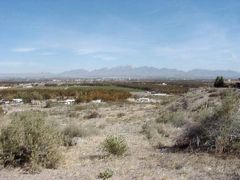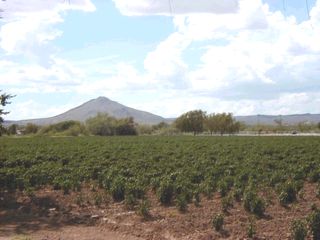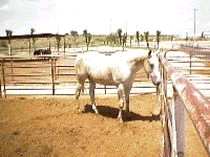Best Viewed in 800x640 using Internet Explorer
 Las Cruces, NM which means City of the Crosses. Over four centuries ago
Spanish explorers brought their faith and their language to this land.
A crossroads of Hispanic, Indian and America cultures which sits in center
of a fertile river valley of the high desert (an altitude of 3,800 feet
above sea level) surrounded by the Caballo Mts. to the North, the Organ Mts. to the East, and the Goodsight Mts. to the South. The Rio Grande flows
on the West side and winds it way its way through the peaceful Mesilla
valley. Irrigation from aqueduct (or water canal)
plays an important roll in the farming industry still today.
Water rights had been established in the early settlement of the valley
which have been carried forward today.
Las Cruces, NM which means City of the Crosses. Over four centuries ago
Spanish explorers brought their faith and their language to this land.
A crossroads of Hispanic, Indian and America cultures which sits in center
of a fertile river valley of the high desert (an altitude of 3,800 feet
above sea level) surrounded by the Caballo Mts. to the North, the Organ Mts. to the East, and the Goodsight Mts. to the South. The Rio Grande flows
on the West side and winds it way its way through the peaceful Mesilla
valley. Irrigation from aqueduct (or water canal)
plays an important roll in the farming industry still today.
Water rights had been established in the early settlement of the valley
which have been carried forward today.


The city enjoys a moderate climate with an average of 350 days of clear
weather annually and prevailing southwesterly winds. January's average
temp- erature is 59 degrees for a high and 27 degrees for a low, while July's
high is 94 degrees with a low of 62 degrees. The annual precipitation
is 8.5 inches; 3.3 inches of snowfall. A city surrounded by fields of
Chili Pepper, corn, cotton, cabbage, onions, and hay, just to name a few,
its deverisity is widespread.

New Mexico State University, located within the city, sits on a 900-acre
campus and enrolls 15,409 students from all 50 states and from 87 nations.
A Level One research institution, NMSU has research expenditures exceeding
$100 million a year. NMSU offers PhD's in various fields.
It ranked second among U.S. universities in the impact
of its engineering research
published between 1993 and 1997, according to the
Institute for Scientific Information.

